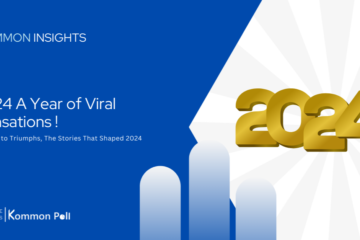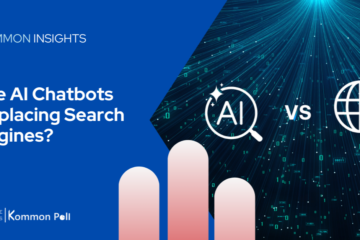In the digitally-first world of today, knowing your customers is essential. Traditional surveys were the main method of obtaining feedback for many years, but businesses have had to change as a result of consumers freely sharing their ideas on social media, forums, and review websites. Social listening, which records unfiltered, real-time input from Internet discussions, has become more popular as a result of this change. For organizations hoping to remain competitive and fully comprehend consumer mood, social listening has become a crucial tool.
Social listening tracks organic, spontaneous internet conversations as opposed to traditional surveys, which use pre-formulated questions. Each review, Instagram post, and tweet turns into a useful piece of information that sheds light on consumer experiences. Social listening enables brands to monitor trends, find hidden pain points that surveys might miss, and identify new issues. Brands may proactively resolve issues before they worsen and make sure their initiatives meet customer expectations by keeping an eye on real-time conversations.
Social Listening in Action – Taco Bell


A powerful example of social listening in action comes from Taco Bell. When customers share their experiences on social media, their feedback often reveals flaws in product or service that traditional surveys might miss. For example, if a customer shares a photo of an incomplete order, the visual evidence combined with their frustrated comment can immediately highlight a specific issue like missing ingredients or poor product quality. This is information surveys might miss, as they typically rely on questions like, “How was your meal?” without allowing customers to freely describe their experience.
The main benefit here is that social listening is able to record details and feelings that surveys are unable to. For instance, a social media post may have a humorous or frustrated tone, providing more in-depth information on a customer’s feelings around a problem. Taco Bell can spot trends that point to a larger operational problem, such inconsistent food preparation at several locations, by looking through these kinds of posts. Taco Bell can swiftly address these issues through social listening, enhancing the brand’s reputation and making necessary modifications.
Key Advantages of Social Listening
Traditional surveys, while widely used, often fall short in capturing genuine customer emotions due to several inherent biases and limitations,
- Structural Limitations Traditional surveys are limited by rigid formats and biases that hinder authentic feedback. The Framing Effect shapes responses based on how questions are worded, such as “How satisfied are you?” which may miss dissatisfaction. Acquiescence Bias leads respondents to agree with statements, often inflating feedback. Social Desirability Bias causes answers to be shaped by what respondents think is socially acceptable, masking their true opinions. These issues prevent surveys from capturing the full, genuine emotions and experiences of customers.
- Low Response Rates Many surveys struggle to achieve adequate participation, with only a fraction of recipients responding. This small sample size often leads to unrepresentative data, skewing insights and missing out on diverse perspectives.
- Delayed Feedback The process of designing, distributing, and analyzing surveys takes time, resulting in delayed insights. This lag makes it difficult for businesses to respond to issues quickly, especially in dynamic markets or during crisis situations.
- Exclusion of Non-Responders Surveys fail to capture the opinions of customers who don’t participate, which often includes dissatisfied or disengaged individuals. This exclusion skews the data toward more engaged or satisfied customers, leaving critical feedback unaddressed.
- Difficulty in Capturing Emotional Nuance While surveys rely heavily on text-based responses, they often fail to capture the tone, intensity, or context of emotions behind a customer’s feedback. This makes it harder to fully understand customer sentiments or identify the urgency of an issue.
Social listening offers a dynamic solution to these challenges, providing several significant advantages,
- Authenticity and Unbiased Input It captures real, unsolicited feedback, free from the constraints of framing or social pressure.
- Broad and Flexible Insights Social listening gathers diverse data from organic conversations, uncovering trends and issues traditional surveys might miss.
- Real-Time Analytics It identifies emerging issues instantly, enabling brands to take immediate action and address concerns before they escalate.
- Cost-Efficiency By analyzing publicly available data, social listening eliminates the costs of designing, distributing, and analyzing surveys.
- Stronger Customer Relationships Direct responses to concerns demonstrate empathy and commitment, fostering trust and loyalty.
- Trend Tracking and Adaptation Social listening enables brands to monitor changing consumer preferences and industry trends, staying ahead of the competition.
While traditional surveys still have value in some contexts, their biases and limitations can hinder a brand’s ability to fully understand its customers. Social listening provides a powerful, authentic, and cost-effective alternative, helping brands improve customer satisfaction, address issues promptly, and stay competitive in a fast-paced market.
Listening Before Leaping- The Need for Social Listening


While surveys remain valuable, their limitations are clear when it comes to decisions affecting brand perception. This is where social listening truly excels, offering brands a chance to gain deeper insights before making a move. Take Jaguar’s logo redesign, for example. When the automaker introduced a new logo, it faced significant backlash from customers who had a deep emotional attachment to the previous one, particularly the iconic leaping jaguar symbol.
Had Jaguar relied solely on traditional surveys before the redesign, they might have only received basic “like or dislike” responses. Such feedback wouldn’t have captured the emotional connection customers had to the old logo. Traditional surveys often fail to reveal the underlying emotional significance behind such decisions.
Social listening, on the other hand, could have given Jaguar a much more nuanced understanding. By tracking real-time conversations across social media platforms, they would have quickly identified that the attachment to the old logo went far beyond design preferences. Customers expressed deep nostalgia, disappointment, and frustration—emotions that are rarely captured in standard surveys. This type of sentiment is invaluable when making major branding decisions, as it helps brands understand how changes might affect customer loyalty and emotional ties.
Empowering Brands to Listen and Act
At Kommon Poll, we recognize the power of social listening in shaping modern business strategies. Our tools help brands monitor conversations, identify customer pain points, and take proactive, data-driven actions. For example, if a company sees recurring complaints about a specific product feature or a trend emerging on social media, it can act quickly—whether that’s refining the product, adjusting marketing strategies, or engaging directly with customers to resolve issues.
With Kommon Poll, brands gain the ability to spot these insights in real time, empowering them to be proactive in improving their offerings and building stronger relationships with their audience.
Ready to listen to your customers like never before? Start your social listening journey with Kommon Poll today!




